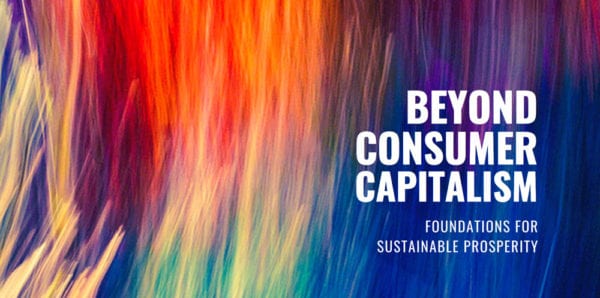Questioning ‘Self-Determination’ in Inclusive Growth: Echoing Australia’s Stolen Generation
Unexpected for Joanna Kitchen, her field work investigating socio-environmental accounting procedures in hybrid organisations led her to the ancient wisdom of First Nations communities, with thousands of years of unrecognised sustainable practices and innovation, and the relationship they hold with the land—it is undeniable, she finds, that having their voices heard can bring about new solutions to long-held challenges. But the concept of ‘inclusive growth’ may not be it.

Indigenous peoples have the right to self-determination.
This guarantees the right to freely determine their political condition and the right to freely pursue their form of economic, social, and cultural development.
—Article 3 of the UN Declaration on the Rights of Indigenous Peoples
There are discrepant viewpoints existing in understanding the concept of self-determination, drawn from multiple perspectives including humanism, psychoanalytics and developmental theories to name a few. Though diverse, self-determination theorists agree about the universality of basic psychological needs, which are necessary conditions for the well-being of peoples. These basic needs, which represent innate requirements, include competence, relatedness and autonomy. This piece is not to debate about the various components or definitions of self-determination theory, instead problematise the role of self-determination in the conceptualisation of inclusive growth.
I started to become intrigued by the difference in Indigenous form of economic, social and cultural development as pointed out in the UN Declaration of Rights of Indigenous Peoples (UNDRIP). I write as an Australian, having grown up learning about the First Fleet’s “discovery” of this great mass of land, as led by Lt James Cook, with the continent then declared as terra nullius. It is in my recent interactions with organisations that work with Aboriginal and Torres Strait Islander communities, as well as some Indigenous led businesses that I have come to appreciate the rich, yet widely unrecognised and unacknowledged history of the First Nations’ Peoples.
This blog hopefully serves as a precursor to questioning what inclusive growth and sustainable prosperity may look like through Indigenous lenses. The wisdom behind the world’s longest surviving culture, the thousands of years of unrecognised sustainable practices and innovation, and the relationship they hold with the land—it is undeniable that having their voices heard can bring about new solutions to long-held challenges.
In the first instance, self-determination felt at odds with the idea of inclusive growth—a term referred to frequently in sustainable development related discussions. “Leaving no one behind” is the premise for inclusive growth. My current research work has opened up questions on “inclusiveness” and on “growth”. In pulling the two constructs together: self-determination and inclusive growth, the following questions are the type that comes to mind: What are we being included in/with? What kind of growth? Who is included with whom? What happens when one has a different view of growth than the kind of growth in public discussion? Whose form of development are people being drawn into? And how do self-determination and its components fit in?
Then ask these questions again through the lenses of a population largely displaced, controlled, marginalised, and massacred. A population who were forced to turn their backs on their languages and practices and adopt their invaders’. According to Australian Institute of Aboriginal and Torres Strait Islander Studies (AIATSIS) there are more than 500 distinct cultural groups which make up Indigenous Australia, with at least 250 languages on record yet only 120 are still in use, though quietly. These make up some of the world’s oldest languages, and 100 of them are considered endangered.
As I write this, I acknowledge Eora Peoples, the traditional custodians of Gadigal Nation – a place most would know as Sydney. The First Nations’ Peoples have inhabited these lands for over 60,000 years, nurtured some of the oldest scientists, inventors and artists in the world. It is the Aboriginal cultures centred on reverence for the land and emphasis on knowledge sharing, through story-telling or yarning. It baffles me that their voices are largely unheard and ignored in the face of sustainability challenges.
I had the privilege of being welcomed into one of the First Nations’ communities to “have a yarn” with a number of the Elders, to listen to their stories. They opened up about the struggles of the past, the stories of the stolen generation. From their reminiscence of struggle, I heard the strength and resilience of the Aboriginal and Torres Strait Islander peoples who were forcibly removed from their lands, forced to relocate from their countries to missions or reserves without having a choice in the matter. The last couple of centuries have largely been unkind to the peoples that this nation should really have been celebrating; instead most have been pushed to the sidelines with their lineage listed down in history as mere hunter-gatherers. Where as more recent discussions have shown sophisticated agricultural technologies and types of economies that have existed for thousands of years between and within the nations in Australia. Interestingly, at least for me, there is evidence that Aboriginal Australians may have invented bread!
Bruce Pascoe’s “Dark Emu” from 2014 is one of the controversial publications that challenge the dominant narrative of pre-colonial Aboriginal Australians as nomads in loincloths with hunting sticks. It doesn’t come as a surprise that First Nations’ communities have predominantly negative views of government, prefer autonomy and (still) pining for self-determination. Their preference of coping in the fringes of “civilisation” and some semblance of control within their own communities is apparent, rather than federal assistance or various government interventions. Hence, various government programs such as “Close the Gap” projects or the different reconciliation plans seem to fall short of their intended goals. I sensed the Elders’ concern that the government does not seem to understand their culture.
UNDRIP states that they have the freedom to “pursue their form of economic, social and cultural development”, how does this fit into the current Sustainable Development Goals discussions of inclusive growth? Particularly in cases where in the broad economic and political structures seem at odds with the First Nations’ understandings. It has been argued that economic growth is a necessary condition for inclusive growth. One can also safely assume that inclusivity implies a better economic distribution and lowering (if not, eradicating) inequalities. But… What happens when economic growth is not as valued in these groups? What if pride in their home is seen as more important than their individual health? What if the idea of inclusion that we talk about and are trying to push forward is at the expense of their self-determination.
Acknowledgement of country
This reflective piece was composed with utmost respect and appreciation for stories shared by Aunties and Uncles from Dunghutti nation, lessons learned from Kulin nation, insights from Kuku Yalanji peoples and connections made on Gadigal nation.
I’d like to pay my respects to the First Nations’ Elders present and those who have gone before.
International Day of the World’s Indigenous Peoples
Friday 9th of August, 2019 is International Day of the World’s Indigenous Peoples. A day dedicated to the celebration of an estimated 370 million First Nations’ Peoples who live in about 90 countries across the world.



